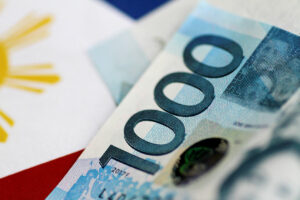




Quarterly Economic Growth Release: More BSP cuts to come
 DOWNLOAD
DOWNLOAD

Monthly Economic Update: Fed catches up
 DOWNLOAD
DOWNLOAD

Inflation Update: Steady and mellow
 DOWNLOAD
DOWNLOAD


Philippine debt hits record-high PHP 17.27T

The national government’s (NG) outstanding debt jumped to a fresh high PHP 17.27 trillion as of end-June, data from the Bureau of the Treasury (BTr) showed.
The latest data from the BTr showed outstanding debt rose by 11.5% from PHP 15.48 trillion in the same month in 2024.
Despite hitting a fresh high, the Treasury said outstanding debt “remains sustainable.”
Month on month, NG debt inched up by 2.1% from PHP 16.92 trillion in May due to “strong investor demand for government securities,” the BTr said.
NG debt is the total amount owed by the Philippine government to creditors such as international financial institutions, development partner-countries, banks, global bondholders and other investors.
The bulk or 69.2% of the total debt was owed to domestic creditors, while the rest was owed to foreign creditors.
Domestic debt, which is composed of government securities, increased by 13% to PHP 11.95 trillion as of end-June from PHP 10.57 trillion in the same month last year.
Month on month, domestic borrowings rose by 1.4% from PHP 11.78 trillion at end-May.
The BTr said it prioritizes domestic borrowings because it is “consistent with the government’s goal to boost the local capital market while lowering foreign exchange risks and building investor trust in Philippine-issued securities.”
On the other hand, external debt rose by 8.3% to PHP 5.32 trillion as of end-June from PHP 4.91 trillion a year ago. It also went up by 3.5% from PHP 5.14 trillion in the previous month.
Foreign debt was composed mainly of PHP 2.71 trillion in government securities and PHP 2.6 trillion in loans.
External debt securities consisted of PHP 2.29 trillion in US dollar bonds, PHP 252 million in euro bonds, PHP 59.32 billion in Japanese yen bonds, PHP 56.38 billion in Islamic certificates and PHP 54.77 million in peso global bonds.
As of end-June, the NG-guaranteed obligations “remained stable” and inched up by 0.4% to PHP 345.11 billion from PHP 343.65 billion a year ago.
“The year-to-date decline of PHP 4.33 billion since end-2024 highlights continued efforts to manage contingent liabilities while supporting essential sectors,” the BTr said.
Month on month, it also increased by 0.4% from the end-May level of PHP 343.58 billion.
“After the NG released a statement effectively raising the debt ceiling for the country, the new inflow of borrowings seems to be in line with their goal of further increasing their spending to drive growth and development,” Reinielle Matt M. Erece, an economist at Oikonomia Advisory and Research, Inc., said in a Viber message.
Earlier this month, Palace Press Officer Clarissa A. Castro said the Department of Finance considers 70% of gross domestic product (GDP) to be the international threshold for sustainable borrowing, as opposed to the 60% rule-of-thumb that multilateral banks often hold developing countries to.
NG debt as a share of GDP rose to 62% at the end of the first quarter, the highest in 20 years. This is a significant jump from the 60.7% posted at the end of 2024.
“The National Government’s prudent debt management approach strategy reflects the Marcos, Jr. administration’s commitment to safeguarding fiscal sustainability, supporting inclusive growth, and ensuring that every peso borrowed is used to build a stronger economy for the Filipino people,” the BTr said.
The NG’s outstanding debt is projected to reach PHP 17.35 trillion by end-2025. — A.R.A.Inosante
This article originally appeared on bworldonline.com





 By BusinessWorld
By BusinessWorld
